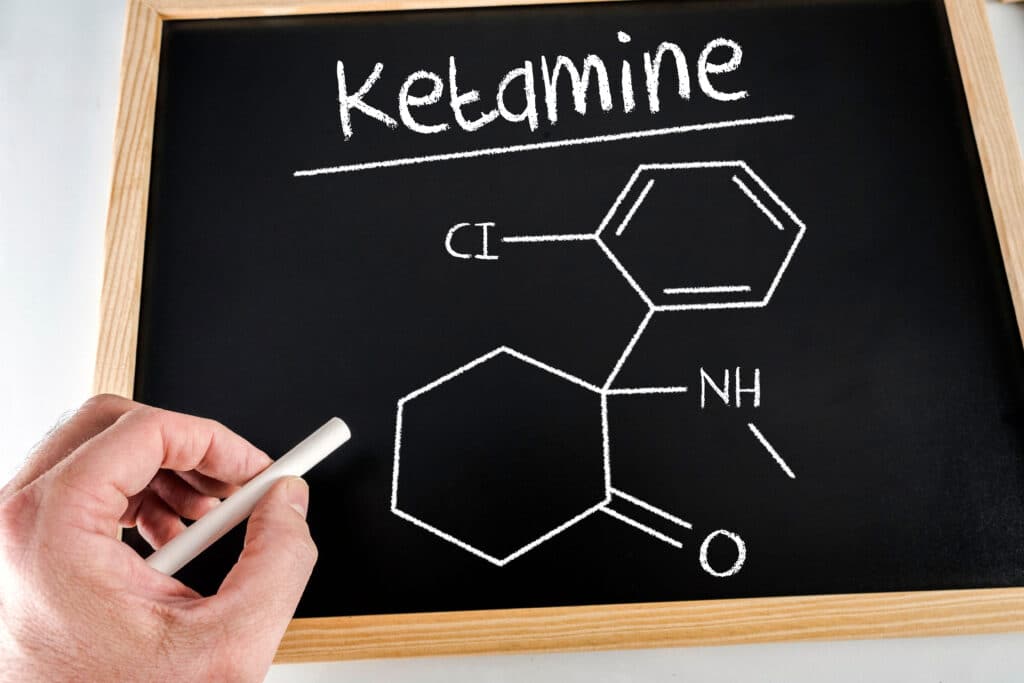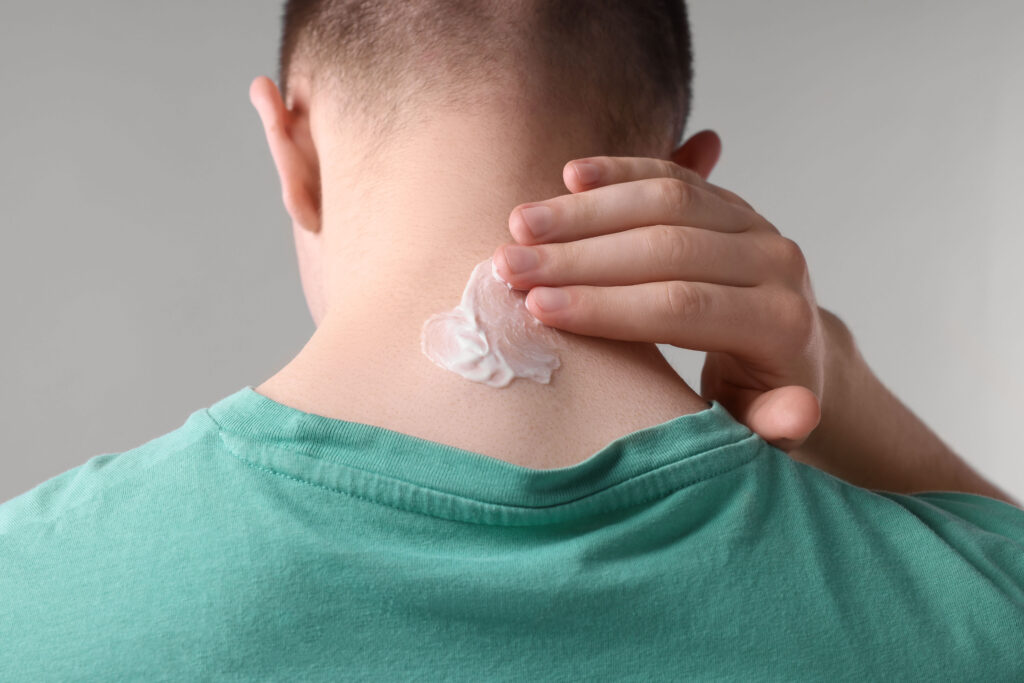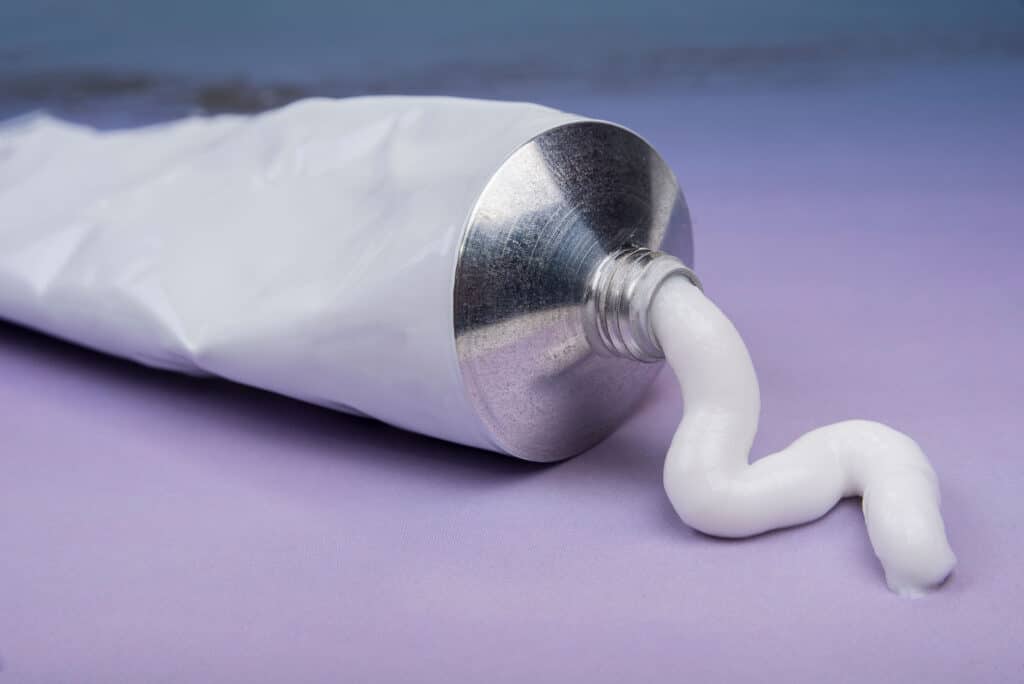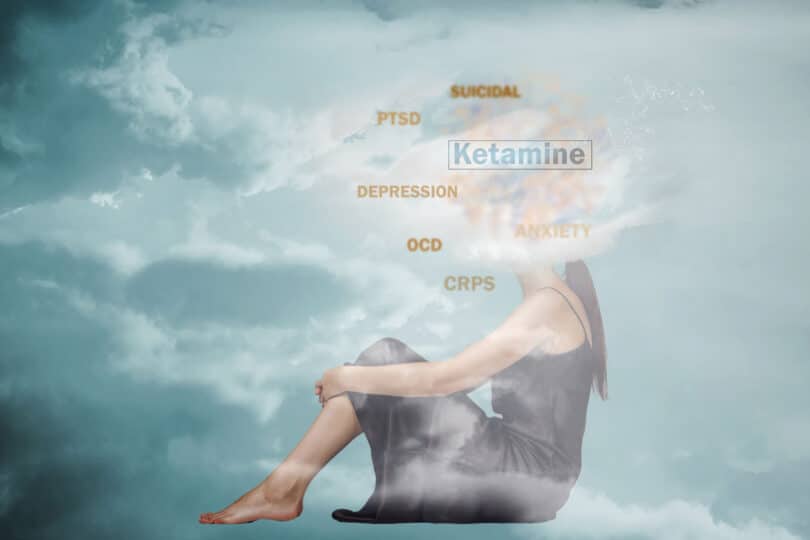Ketamine can be taken intravenously, via IM, by mouth, by nose (snorted), and even as a topical treatment. How well does this last option work? Read on.
Ketamine basics
Ketamine isn’t a natural compound, but rather, a lab-made drug that was created in 1962 by pharmaceutical company Parke-Davis. In 1970 it received authorization by the US’s FDA as a Schedule III anesthetic for both humans and animals. Ketamine is different from other hallucinogens we speak about, because its actually legal for medical use. We are not talking about a Schedule I drug.
Besides its capability as an anesthetic, which is used for surgery, the drug also shows ability for cataleptic and analgesic effects. Though it causes sedation in users, its not actually a hypnotic, meaning, it doesn’t put a person to sleep. It also doesn’t cause a lowering of vital signs like blood pressure or respiration rate at general anesthetic levels, meaning its quite safe in terms of overdosing.
When ketamine was first tested back in the 1960’s, it was used on a prisoner population. At that time it was established that ketamine had both pain-relieving properties, and some kind of ability to affect mood. In terms of the first point, it went on to be used on the fields of Vietnam. In terms of the second, its been the center of a therapeutic market for several years as an alternative to standard antidepressants for mental health issues. Yet, somehow, there is no further official clearance given for these uses.

Even so, ketamine is used for both. Its legal status opens up a loophole, in that doctor’s can prescribe it for off label uses, if they think the medicine is applicable for the patient. This has led to a large gray market ketamine industry that functions outside the regular medical system. As of yet, there has been no catastrophe, or even near-catastrophe, despite smear-campaigns and warnings by the government.
Topical ketamine
Ketamine is known mainly as a drug you snort on the street. It’s powder, like cocaine, and you can make lines in the same way, or take it as a bump off a fingernail. For most people that do ketamine, this is the way they take it in. When used in a medical setting, however, its generally IV, since its usually used for anesthesia. It can also be injected into a muscle (IM), or taken as a pill; which has become big for at-home treatments.
The delivery method which is spoken about the least, is topical ketamine, but this exists as well. This simply means that ketamine is made into a cream, and put on the skin. While we hear about other methods of ketamine use, we rarely hear about this one. However, it exists, and there is some limited research into it, and current research underway.
In this study from 2015, entitled Analgesic effects of topical ketamine, study authors make a few points, like that ketamine is a good option for neuropathic pain and complex regional pain syndrome, since it doesn’t have serious side effects. They point out that clinically significant side effects are incredibly rare, even at high doses.
It seems there are no large scale studies for this, even though ketamine shows as a good (no, great) alternative to opioids, and the addiction and death issues therein. However, in this study of five patients with sympathetically maintained pain, all showed 65-100% reduction in pain scores, compared to pre-treatment levels. This study of 300 emergency room pain patients from 2021 showed that ketamine reduced pain symptoms; although it performed about the same as lidocaine.
In this 2021 review by Frontiers in Science, called Ketamine Use for Cancer and Chronic Pain Management it states, “Ketamine has repetitively been shown to reduce pain scores and subjective measures of pain. While the use of topical ketamine alone does not have strong supporting evidence, its use in multi-agent creams has been effective in some pain conditions.”

Topical ketamine for PTSD
New testing is underway to see if a topical ketamine product can help with psychological issues, like PTSD. In 2023, it was reported in Clinical Trials Arena, that the company Psycheceutical announced the start of Phase I trials into a new topical ketamine drug meant to treat PTSD, with Phase II trials already on the horizon.
The product, called NeuroDirect, is made to target nerve endings in the neck. This is meant it get around the hallucinogenic effects associated with the drug. How well it works to do so, is a big part of the current trials. They’re meant to assess how safe the drug is, how well its tolerated, and the general pharmacokinetics; all after a single dose. Only 24 patients are included in these trials, however, all are healthy patients. No PTSD in this population
This is the first set of trials that look into whether a topical version of ketamine is safe for a consumer population. Prior to these trials, investigators’ pre-clinical observational results, showed that approximately 80% of participants gained a benefit for their PTSD, from the topical ketamine.
So far, the Phase I participants were all successfully dosed, and the dosing was tolerated fine. Should subsequent trials also go well, this new medication would make ketamine administration easier and safer, since it wouldn’t involve directly entering anything into the bloodstream. Oral use is also an option, but is hard to predict outcomes with, as different patients absorb it quite differently.
Psycheceutical’s CEO Chad Harman, had this to say about the undertaking: “With our goal of a non-systemic treatment for PTSD using legal ketamine, we are attempting to pave the way for our future drug candidates to treat other mental health disorders.”
In terms of the intention for Phase II trials, these would revolve around using the NeuroDirect on PTSD patients. As per an announcement in February of last year, the company is looking to enlist 115 study participants with PTSD, to assess how effective the drug is in reducing PTSD symptoms.

Main benefits of topical ketamine
There are several benefits to using a topical version of ketamine over injected versions or oral versions. For one, its easy to use, and requires nothing more than applying to the skin. It’s just as easy to take a pill, of course, but pills come with the detraction of not knowing how a specific person’s body will break it down and respond.
The topical ketamine is put directly on the back of the neck, because this puts it close to the brainstem. Here, a drug can enter the body without going through the blood-brain barrier. This direct approach is meant to bring down unwanted side effects related to nausea, dizziness, or hallucinations. It does not have to be processed through the digestive tract, like a pill does.
Since the drug uses such a direct application, it can be with a low dose, which brings down any risk of addiction. Realistically, ketamine is rarely spoken about as an addictive drug, except when it comes to companies or governments telling you what product to buy. However, if this idea satiates those entities, all the better.
The simple application method means that patients don’t have to be in a hospital setting, and essentially gives another option for at-home ketamine use. It’s hoped this will bring down costs both for individuals and insurance companies; and allow more people access to these treatments.
Conclusion
For whatever reason we don’t see many topical ketamine products; it seems this is about to change. In the next few years, I expect this product will come to market, as well as plenty of others, as ketamine only grows in popularity. Both for pain issues (particularly as a way to avoid opioids) and the treatment of mental health disorders.
Hello all! We welcome you to Cannadelics.com, an independent rag in the wellness space, here with the best stories of today. Come by daily to be a part of everything; and subscribe to the Cannadelics Weekly Newsletter, for all the best news and product promos.









